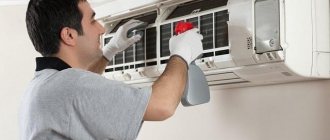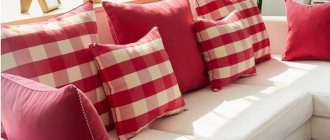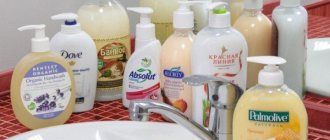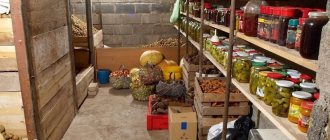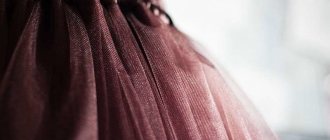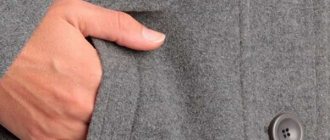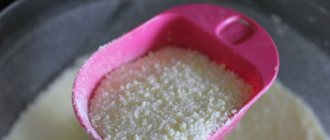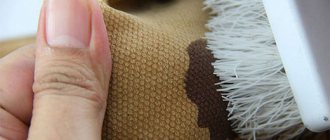Composition of conventional and natural washing powders
Before drawing conclusions and choosing any type of powders and detergents, you should understand its composition and see the difference. You can make eco-friendly laundry detergent yourself!
Conventional laundry detergents consist of a number of chemicals:
- Anionic surfactants are responsible for the formation of thick foam, removing stains and greasy dirt. According to standards, the content of A-surfactants should not exceed 2-5%, since these substances can negatively affect health by penetrating the body through the skin and settling on internal organs;
- Non-ionic surfactants - act deep in the tissues. They are easily washed off with water, decompose into safe elements and are non-toxic to human health. The consistency of non-ionic surfactants is liquid or paste-like, therefore they are used in powders extremely rarely;
- Oxygen bleaches - remove plaque from fabrics, whiten, disinfect and eliminate unpleasant odors. The most commonly used is sodium percarbonate, which decomposes into soda ash and oxygen. Safe for humans;
- Phosphonates - necessary to soften hard water. Presented in the form of esters and salts. They became a replacement for phosphate, as they are non-toxic;
- Polycarboxylate is a carbon-based compound that also softens water and protects the machine from corrosion;
- Zeolites are absorbents that destroy dirt. Phosphonates help soften water. Natural ziolites are safe for health, but synthetic ones are just as toxic as phosphates;
- Enzymes are compounds that destroy protein contaminants. Used when washing up to 40 degrees. They have a level of moderate toxicity and can cause dermatitis. Destructive effect on things made of natural wool;
- Optical brighteners are organic compounds that absorb ultraviolet rays and impart a blue color to fabrics to enhance whiteness. Unsafe because they do not wash off and can cause skin irritation;
- Flavoring additives - mask the smell of the chemical elements of the powder and add freshness. Often cause irritation of mucous membranes and skin;
- Sodium tripolyphosphate is a phosphate used to make cheap powders. Toxic;
- Sodium hypochloride is also an ingredient in low-quality powders. This is a chlorine bleach that increases the toxicity of surfactants and phosphates;
- Cationic surfactants are amine salts that have a bactericidal effect and neutralize the toxicity of anionic surfactants. Added only to high-quality and expensive powders;
- TAED - activators of oxygen bleaches. Not always mentioned in the composition;
- Anti-resorbents - protect fabrics from dirt adhesion during washing;
- Phthalates - do not allow the smell of fragrances to erode and keep laundry fragrant and fresh.
Manufacturers of natural powders strive to make them as safe as possible, so many harmful and toxic substances have been replaced with organic substitutes:
- Biological surfactants replace anionic and non-ionic substances. These can be fatty alcohols, palm or coconut oil, potato, wheat, glucose compounds;
- Auxiliary and non-ionic surfactants act as bleaches;
- Sodium disilicate is a safe replacement for phosphates. It is recommended to use powders with a sodium disilicate content of at least 20%;
- Stabilizer of peroxide compounds - used instead of chlorine and optical brighteners;
- Essential oils are added to give laundry a pleasant aroma after washing.
Popular washing powders: which ones are more natural
We will tell you about the most popular automatic powders, which can be found in almost any store, so that you can decide for yourself whether each of them is worth buying or not.
| Phosphates, % | A-surfactant, % | Optical brightener | Phosphonates | Zeolites |
| Ariel Professional System | 15-30 | 5-15 | + | |
| Ariel Color Purity Deluxe | 5-10 | + | + | |
| Total System 9 polish | 5-15 | + | + | |
| Myth “Frosty freshness” BIO+Oxygen | 15-30 | + | ||
| Tide for children | 15-30 | + | + | |
| Persil-automatic Color | + | + | + | |
| Concentrated washing powder Amway SA8 | + | + | ||
| Pemos | + | |||
| Lotus | 5-15 | >5% | ||
| Biolan | 5-15 | 5-15 | + | |
| Seagull "Northern Lights" | 5 | + | ||
| Children's Ecole | 15-30 | + |
We won’t advertise ECO and BIO powders - now you just know what components you should be wary of in familiar powders. When choosing your next detergent, look at the label. There are already enough harmful things in life - at least the powder doesn’t spoil your health.
Dry
To prepare dry powders, dry laundry soap, grated on a fine grater, is used. All necessary components are mixed, at the last stage a few drops of essential oils are added, mixed and placed in an airtight container.
Recipe 1:
- 150 g dark laundry soap;
- 500 g regular soda;
- 400 g soda ash;
- essential oil.
Whitening Powder Recipe:
- 1.5 cups of laundry soap;
- 1 cup soda ash;
- 0.5 cups baking soda;
- 1 cup borax;
- a few drops of aromatic oils.
Recipe 3:
- 2 pieces of crushed laundry soap;
- 1 cup baking soda;
- 1 cup soda ash;
- 2 tablespoons of vinegar (3 or 9 -%);
- essential oils (essential to eliminate the strong smell of vinegar).
Rating of the best powders
Below is a list of the most popular products today, as well as their characteristics:
- Sarma Active.
Washing powder, which is used for daily use. Suitable for colored and light-colored clothing. Sarma Active removes any dirt, does not contain chlorine, and preserves the properties of the fabric. Used for cleaning synthetic materials, cotton, wool. One of the disadvantages is the presence of fragrances, which cause the development of allergies. - Tide White Clouds.
Used for washing light-colored clothes. Removes fresh and stubborn stains, contains hypoallergenic components, and has an affordable price. One of the disadvantages is the presence of fragrances and a pronounced odor from them after washing. - Ariel Mountain Spring.
Designed for washing bed linen, towels, not intended for cleaning knitwear. Ariel removes any dirt, preserves the color of the fabric, and makes ironing easier. In addition, the product is used sparingly due to its high concentration. The downsides are the whitening components in the composition, fragrances and surfactants. - Myth 3 in 1.
A budget-friendly powder that allows you to clean dirt from light-colored clothing and also preserve its color characteristics. The product is suitable for daily washing. The downside is the low concentration of elements, which does not allow you to remove old stains. - Eared nanny.
Removes fresh stains from any material. It has a hypoallergenic composition and does not cause allergies. The product dissolves well in low temperature water and does not require additional rinsing. - Lotus Universal.
Suitable for hand washing clothes of any materials. Washing powder fights fresh dirt and prevents fabric from fading and wrinkling. The disadvantages include the presence of bleaching components in the composition, which cause the development of allergies, as well as the presence of surfactants. - Persil Frosty Arctic.
Suitable for cleaning colored and white items. It contains active components that help remove stains of any age. Persil prevents fading and makes ironing easier. The downside is the presence of fragrances, surfactants and a strong odor.
Before purchasing detergent products, you need to familiarize yourself with the characteristics of the powders, their functions and features. The condition of things and their service life depend on the correct choice.
Liquid
To prepare liquid laundry detergent, you will need a saucepan and water.:
- Grate 1 piece of laundry soap, place it on the bottom of the pan, cover with water and cook over medium heat until smooth;
- add water to half the pan, add 1 cup of soda ash, 0.5 cup of borax, stir;
- add water and leave to cool overnight with the lid closed;
- Add essential oil to the cooled mixture.
Using such powders is quite simple. The product is added to the drum of the machine or to a special compartment for powder, at the rate of 1-2 tablespoons per 2-3 kg of items.
Why are phosphates in powder harmful?
The effect of phosphates on the human body
Harm of phosphates to the environment
A huge amount of phosphates, along with wastewater, enters water bodies, creating favorable conditions for the proliferation of blue-green algae. They pollute water bodies, and this process even affects huge rivers. As a result, oxygen leaves the water, the level of nitrogen and hydrogen sulfide increases hundreds of times, which leads to the catastrophic extinction of fish and aquatic vegetation.
The cycle of phosphate circulation is closed by the fact that they again enter the water supply system with water. And there is every chance of getting an additional dose of them along with food cooked with tap water.
Best Organic Powder Manufacturers
Amway SA8 Premium
Liquid concentrated detergent. It copes well with stubborn stains, preserves the color of linen, and is completely washed out of fabrics.
Frau Marta
Concentrated powder of German quality. Manufacturers guarantee that 2 kg of product replaces 6 kg of regular powder. The composition contains oxygen bleach and bioadditives responsible for removing stains. Safe and certified product.
Faberlic
Faberlic presents a series of concentrated liquid powders - for dark and colored fabrics, special fabrics and white linen. When creating the product, a biodegradable formula is used. The composition is safe and non-toxic.
Faberlic products not only cope well with various contaminants, but also protect the skin of your hands and are also very economical to use.
Nature Clean
Nature Clean is a Canadian brand that produces certified non-toxic and hypoallergenic laundry and cleaning products . The company presents dry powders and liquid gels containing soda ash and sodium chloride, herbal surfactants, salts and non-toxic minerals. Products from Nature Clean are economical and easy to use. The linen does not lose shape and color, and acquires a pleasant aroma.
Chistown
Washing powders from Chistown are made on the basis of natural soap. They are completely biodegradable, do not damage the washing machine, do not clog pipes, and are produced in environmentally friendly paper bags.
Baby Line
Baby Line soft gel is designed for washing baby clothes. Gently cleans things without leaving marks on the fabric. Made from natural ingredients that are safe for child health and the environment. Has a bactericidal effect.
IVF2
Bleach and soap bombs for washing EKO2 are no less popular and of high quality. The products are made using active oxygen, which breaks down into harmless elements - water, soda and oxygen.
The products rinse well in water, leave no residue, and disinfect laundry and water. Suitable for washing in any water.
What is included in ECO laundry detergents?
Powders marked ECO include harmless analogues of harmful synthetic substances. Ecosurfactants have replaced conventional surfactants.
These are special compounds obtained from rice, wheat, potatoes and glucose. They also contain fatty alcohols from palm and coconut oils.
Often bacteria or even yeast can be found in their composition. They do not have any effect on the quality of washing clothes, but do not cause any harm to the environment.
All ingredients with a whitening effect have been replaced with non-ionic and auxiliary surfactants. They do not pose a threat to human health. BIO powders include sodium disilicate.
It binds hard salts in water, making it much softer. Sodium disilicate also carefully takes care of the parts of the automatic machine.
When choosing an eco-powder in a store, it is better to give preference to one that contains up to 55% of such ingredients.
It is impossible to find active oxygen and chlorine in such gels, capsules, etc. Instead, they contain a water-soluble complexing agent and stabilizer for peroxide compounds.
They have an organic basis.
As for aromatic fragrances, here they are replaced with essential oils. Despite their naturalness, people with hypersensitivity should use them with extreme caution.
Use rubber gloves or wash your hands well after the procedure if you choose the hand washing method. Otherwise, irritation may occur.
Children's natural remedies
Among the organic powders for washing children's clothes are:
- Sodasan Comfort Sensitive is a powder containing silicates, polyaspartates and citrates, suitable for all types of fabrics, does not cause allergies, and prevents the appearance of scale and corrosion. The product is used very economically;
- Garden kids Eco-friendly - contains silver ions, due to which it has a bactericidal effect. Ideal for children with sensitive skin and asthma sufferers. Completely decomposes and does not harm health;
- Burti Hygiene - removes stubborn stains, allergens and germs. Whitens things well;
- Tobbi Kids is a washing powder based on natural soap. Available for different ages of children;
- Babyline Baby Powdered Detergent is a concentrated detergent for washing baby clothes. Made from soap and active oxygen. Harmless and economical;
Types and differences of powders
Powders for washing clothes currently come in two types, namely for hand washing and for washing machines. Such compositions differ in their foam formation, which also determines the quality of washing things.
Powder for hand washing should have good foam formation, as this helps to better wash things and remove difficult stains (paint, varnish, grass, etc.). On the contrary, detergents for an automatic washing machine should not form a lot of foam, since a large amount of it prevents the laundry from sinking to the bottom of the drum of modern equipment, and an excess of bubbles leads to its breakdown.
The choice of washing powder directly depends on a person’s personal preferences, since today this product is available in several types, on which the result of washing directly depends.
These types include:
- auxiliary powders that practically do not remove difficult stains, but quickly soften water,
- universal compositions that can be used every day with a small degree of soiling of the laundry,
- special ones that should be used on a certain type of fabric - silk, wool, colored fabrics, children's clothes, and so on,
- endowed with active substances that can overcome old stains of any type.
Washing powders for white clothes contain oxygen-based bleaches, as well as chlorine and additional substances that settle on the fabric, thereby making it much whiter. A good powder for colored items contains many enzymes that are gentle on bright fabrics. But woolen clothes should not be washed with this product, since it will immediately change the appearance - today a special group of powders has been developed for wool, which are endowed with a low percentage of enzymes.
There are also effective powders for black things that do not wash off the paint from them, and also leave the color bright and saturated.
Organic fabric conditioner
When washing, conditioners are often used to soften fabrics. We present to our attention organic conditioners:
- Vernel - products are developed on the basis of cationic surfactants that are safe for the environment;
- Lenor - environmentally friendly conditioners that soften fabrics, add freshness and antistatic properties, and increase the wear resistance of things;
- Eared Nian - a product containing extracts of lavender, aloe and cashmere, suitable for both adults and children;
- Cotico - conditioners soften things, preserve color and quality, are hypoallergenic and safe. Gives laundry a pleasant aroma;
DIY cooking
You can prepare eco-friendly fabric softener at home:
- before washing, add 100 ml of vinegar and a few drops of essential oil to the conditioner compartment;
- mix 1 liter of water, 140 ml of vinegar, 0.5 cups of baking soda. Mix everything and add 120-140 ml when washing;
- Mix 600 ml of water with 300 ml of vinegar and 200 ml of natural hair balm and mix. use 150 ml per wash.
Popular articles
- Using natural face cream: advantages and disadvantages, DIY preparation Our skin needs constant care to maintain it in a blooming state. And there’s no way around it...
- Making natural soap with your own hands at home It’s no secret that natural handmade soap is better than regular store-bought soap. But the reasons why...
- Making natural shower gel: how to make your own products for adults and children, top best brands For daily body care, especially after a hard day at work, you want to choose a natural product with…
Characteristics of powders by purpose and type of release
Today, powders differ in shape, purpose, composition, and have different technical characteristics.
By shape
Laundry detergents come in several forms, each designed to clean specific items. Types and comparative characteristics of washing products:
- Powder products . The most common type, suitable for any wash;
- Gel products . They have a higher concentration, which is why they cope with old stains;
- Tablet products . Suitable for people with hypersensitive skin;
- Granular powders . Used for washing outerwear, bed linen, towels.
All products are suitable for both hand and machine washing.
By purpose
Based on their intended purpose, detergents are divided into the following categories:
- Standard . Used for regular washing at home;
- Professional . Used in laundries;
- Special . Used for washing delicate items made from natural fabrics. For example, silk, linen;
- Children's . Equipped with gentle substances that have a beneficial effect on the skin.
Using the wrong type of product leads to damage to things or the appearance of white streaks on them.
By the color of things
According to their characteristics, washing powders are divided into the following types:
- Standard;
- For dark things;
- For light clothes.
Each product is equipped with elements that preserve color characteristics and prevent fading of the fabric.
By composition
There are different powders on the household chemicals market that differ in their composition. Types of products and their characteristics:
- Containing surfactants . Surfactants are most often found in detergents. The elements help to form a sufficient amount of foam, which is why the item being cleaned must be rinsed several times. Such products are not intended for washing children's clothes, as they can cause allergic reactions;
- Containing phosphates . These are washing powders that are designed for automatic washing. They contain active components that help prevent scale formation on the device mechanism;
- Containing enzymes . These are products suitable for removing difficult stains from various chemical elements. They are highly concentrated and not suitable for daily use;
- Containing whitening ingredients. Washing powders that are designed for cleaning light-colored items. They enhance the brightness of fabric, remove stains and dullness, and act at low temperatures. Bleach is not suitable for regular use;
- Containing anti-resorbents . These are washing powders that protect the color characteristics of fabrics, facilitate the ironing process and maintain the shape of clothes.
Many products contain fragrances that help cover up the smell of chemicals.
Bleach powder
The powder may contain bleach. They come in two types - optical and chemical. They create a convenient function - one-step washing and bleaching.
Optical brighteners
These are fluorescent brighteners. The essence of their action is the absorption of ultraviolet rays and their conversion into violet or blue light waves.
Scope of application of optical brightener in washing powder:
- cotton fabric;
- natural silk;
- synthetics;
- fur;
- leather.
Optical brightener is suitable for fabrics of any color. It gives whiteness to colorless fibers, and fabrics with prints acquire bright, rich and contrasting colors. Its content in the powder ranges from 0.01 to 0.1%, depending on the type of bleach.
Oxygen-containing bleaches
Another name is peroxide bleaches. Types of chemical compounds:
- perhydrol – hydrogen peroxide;
- persalt – sodium percarbonate;
- hydroperite – potassium peroxodisulfate.
These compounds contain oxygen atoms. When water is heated, bleach releases O2 atoms, which oxidize stains and discolor the fabric. The water heating temperature for maximum peroxide activity is 80-90°C. Therefore, this type of bleach is intended for those types of fabric that can be washed at high temperatures (boiling) - cotton, linen.

